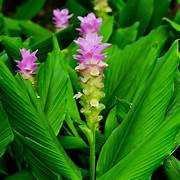Characterisation of Physical Properties of Curcumin Isolated from Curcuma domestica Val http://www.doi.org/10.26538/tjnpr/v7i12.13
Main Article Content
Abstract
The compound Curcumin has many health benefits. Due to their benefits, curcumin molecules are now being developed into pharmaceuticals. However, there is a lack of information on the properties of curcumin compounds that can be used as pre-formulation data, preventing the production of pharmaceutical products based on curcuminoids. This study sought to determine and characterise the physical properties of curcumin to generate pre-formulation data for the development of curcumin-based pharmaceutical products. Differential scanning calorimetry (DSC), powder x-ray diffractometry (PXRD), scanning electron microscopy (SEM), zeta potential value measurement using a zeta potential analyzer (ZPA), tap density, proper density, and solubility tests in propylene glycol, PEG 400, glycerin, and sorbitol solvents were used to characterize the physical properties of curcumin. Curcumin has a compressibility index of 16.463%, a proper density of 1.116 g/mL, a melting point of 169.63C, a particle morphology of long beams that are crystalline, a zeta potential value of -59 mV, and was readily soluble in PEG 400. According to the study’s findings, the isolated curcumin has a long beam shape, is amorphous, incompressible, has a reasonable flow rate, is stable under heating, and does not readily agglomerate.
Downloads
Article Details

This work is licensed under a Creative Commons Attribution-NonCommercial-NoDerivatives 4.0 International License.
References
Elfahmi, Woerdenbag HJ, Kayser O. Jamu: Indonesian traditional herbal medicine towards rational phytopharmacological use. J Herb Med. 2014; 4(2):51-73. doi:10.1016/j.hermed.2014.01.002
Sholikhah EN. Indonesian medicinal plants as sources of secondary metabolites for pharmaceutical industry. J Med Sci (Berkala Ilmu Kedokteran). 2016; 48(04):226-239. doi:10.19106/jmedsci004804201606
Paulucci VP, Couto RO, Teixeira CCC, Freitas LAP. Optimization of the extraction of curcumin from Curcuma longa rhizomes. Rev Bras Farmacogn. 2013; 23(1):94-100. doi:10.1590/S0102-695X2012005000117
4Niranjan A, Prakash D. Chemical constituents and biological activities of turmeric (Curcuma longa L.) -A review. J Food Sci Technol. 2008; 45(2):109-116.
Kementrian Kesehatan Repuiblik Indonesia. Laporan_Nasional_RKD2018_FINAL.pdf. Badan Penelit dan Pengemb Kesehat. Published online 2018:198. http://labdata.litbang.kemkes.go.id/images/download/laporan/RKD/2018/Laporan_Nasional_RKD2018_FINAL.pdf
Singh G, Kapoor IPS, Singh P, de Heluani CS, de Lampasona MP, Catalan CAN. Comparative study of chemical composition and antioxidant activity of fresh and dry rhizomes of turmeric (Curcuma longa Linn.). Food Chem Toxicol. 2010; 48(4):1026-1031. doi:10.1016/j.fct.2010.01.015
Orellana-Paucar AM, Machado-Orellana MG. Pharmacological Profile, Bioactivities, and Safety of Turmeric Oil. Molecules. 2022; 27(16):1-16. doi:10.3390/molecules27165055
Chaudhary S, Hisham H, Mohamed D. A review on phytochemical and pharmacological potential of watercress plant. Pharmacogn J. 2018; 11(12):102-107. doi:10.22159/ajpcr.2018.v11i12.29422
Sasidharan S, Chen Y, Saravanan D, Sundram KM, Yoga Latha L. Extraction, isolation and characterization of bioactive compounds from plants’ extracts. African J Tradit Complement Altern Med. 2011; 8(1):1-10. doi:10.4314/ajtcam.v8i1.60483
Basile V, Ferrari E, Lazzari S, Belluti S, Pignedoli F, Imbriano C. Curcumin derivatives: Molecular basis of their anti-cancer activity. Biochem Pharmacol. 2009;78(10):1305-1315. doi:10.1016/j.bcp.2009.06.105
Fadus MC, Lau C, Bikhchandani J, Lynch HT. Curcumin: An age-old anti-inflammatory and anti-neoplastic agent. J Tradit Complement Med. 2017; 7(3):339-346. doi:10.1016/j.jtcme.2016.08.002
Abd-Alqader SM, Zearah SA, Al-Assadi IJ. Effect of Curcumin (Standard and Supplement) with Zinc on Reproductive Hormones in Polycystic Ovary Syndrome (PCOS) Rats. Trop J Nat Prod Res. 2023; 7(3):2540-2546. doi:10.26538/tjnpr/v7i3.12
Cai X, Fang Z, Dou J, Yu A, Zhai G. Send Orders of Reprints at reprints@benthamscience.net Bioavailability of Quercetin: Problems and Promises. Curr Med Chem. 2013;20:2572-2582.
Mukerjee A, Sørensen TJ, Ranjan AP, Raut S, Gryczynski I, Vishwanatha JK, Gryczynski Z. Spectroscopic properties of curcumin: Orientation of transition moments. J Phys Chem B. 2010;114(39):12679-12684. doi:10.1021/jp104075f
Hewlings SJ, Kalman DS. Curcumin: A review of its effects on human health. Foods. 2017;6(10):1-11. doi:10.3390/foods6100092
Ahamad T, Khan MA, Khatoon S, Kumari A, Khan MF. Curcumin: A review of its potential role in epigenetic mechanism. Trop J Nat Prod Res. 2017; 1(5):191-195. doi:10.26538/tjnpr/v1i5.3
USP. The Official Compendia of Standard, Edisi 30 – 25. Eur Univ Inst. 2007; (2):2-5.
Pharmacopoeia R. The State Pharmacopoeia of the XIII edition. In: XIII. ; 2015:531-543.
Biriukov D, Fibich P, Předota M. Zeta Potential Determination from Molecular Simulations. J Phys Chem C. 2020; 124(5):3159-3170. doi:10.1021/acs.jpcc.9b11371
Zhou, Weilie, Zhong Lin Wang RA. Fundamentals of Scanning Electron Microscopy (SEM). In: Scanning Microscopy for Nanotechnology. Techniques and Applications. ; 2016: 1-40. doi:http://dx.doi.org/10.1007/978-0-387-39620-0_1
Chen J, Qin X, Zhong S, Chen S, Su W, Liu Y. Characterization of curcumin/cyclodextrin polymer inclusion complex and investigation on its antioxidant and antiproliferative activities. Molecules. 2018;23(5). doi:10.3390/molecules23051179
Murtini, G., & Elisa Y. Teknologi Sediaan Solid. Kementerian Kesehatan Republik Indonesia; 2018.
Cantika H. Kimia Farmasi. Kementerian Kesehatan Republik Indonesia; 2016.
Ingwe Violenneofita Cheiya, Rolan Rusli NFL. Pemanfaatan Limbah Pati Kulit Pisang (Musa paradisiaca) sebagai Bahan Pengikat Granul Parasetamol dengan Metode Granulasi Basah. J Sains Kes. 2023;5(1):44-49.
Sudrajat DJ, Nurhasybi, Bramasto Y. Standar Pengujian Dan Mutu Benih Tanaman Hutan.; 2015.
Raymond C. Rowe, Paul J. Sheskey PJW. Handbook of Pharmaceutical Excipients AU. Pharmaceutical Press ; Washington, DC; 2003.
Surya JA, Nuraini Y, Widianto. Study of Soil Porosity in Providing Several Types of Organic Materials in Robusta Coffee Plantation. Soil L Resour. 2017;4(1):463-471.
Ferdiansyah R, Rachmaniar R, Butarbutar MET. Thermal and Crystallinity Properties of Tengkawang Seeds Fat (Shorea mecistopteryx Ridley). Adv Heal Sci Res. 2020; 26:111-113. doi:10.2991/ahsr.k.200523.027
Lili Fitriani, Astika Astika, Uswatul Hasanah EZ. Preparation of Curcumin and Quercetin Multicomponent Crystals via Solvent-Drop grinding. Trop J Nat Prod Res. 2021; 5(4):673-677.


